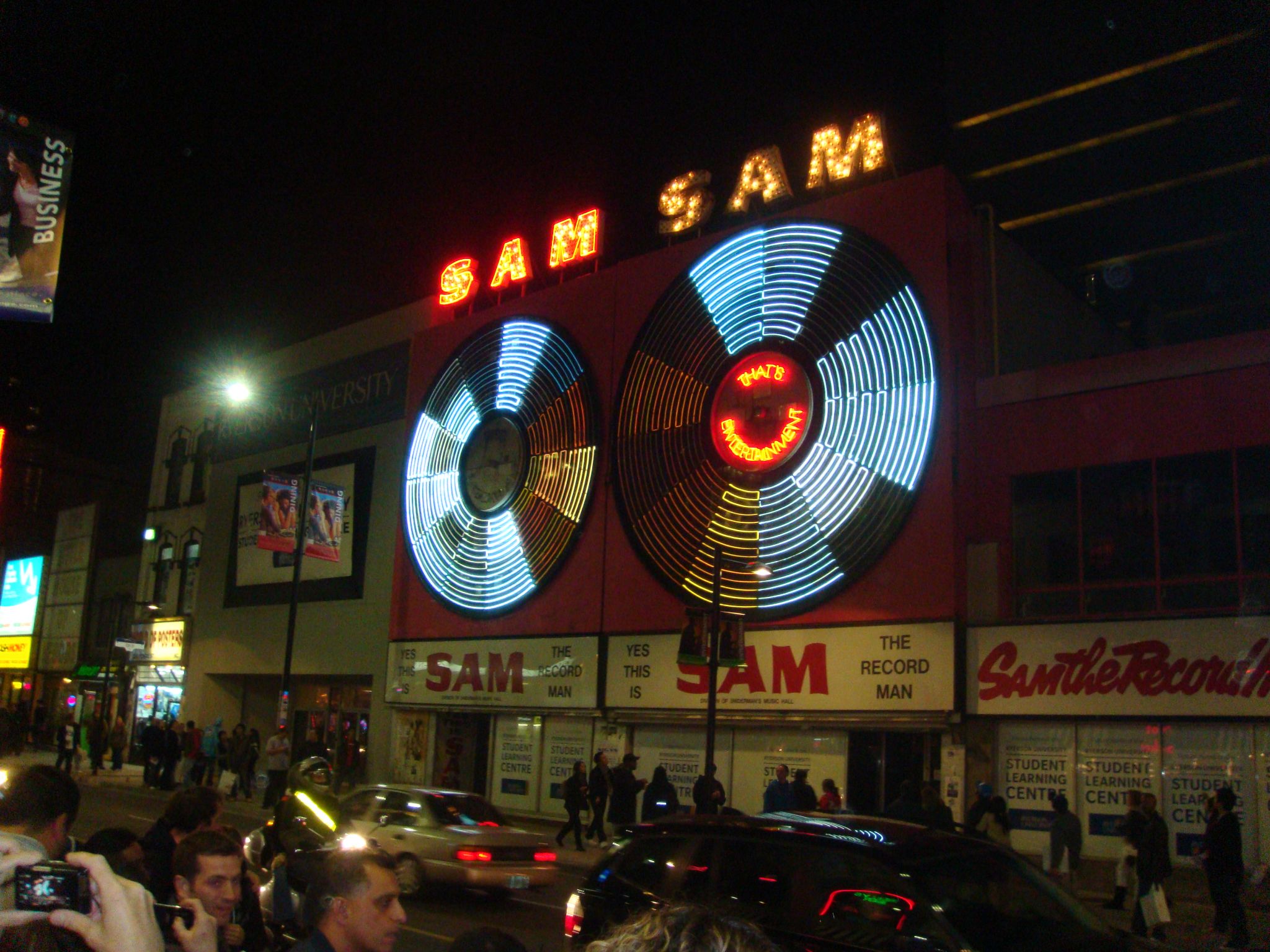Sam’s sign preservation options outlined
by Matthew | 15 November 2012 8:30 am
 [1]
[1]Photo courtesy Gregory Signs & Engraving
Following a freedom of information request, the scope of Ryerson University’s agreement to preserve and showcase Toronto’s iconic Sam the Record Man signage has finally been revealed to the general public.
The now-defunct music store’s famous neon signs—which resembled giant, spinning records—were dismantled, catalogued and stored in 2008 by Gregory Signs & Engraving in Vaughan, Ont., before the downtown retail building was demolished to make way for Ryerson’s new Student Learning Centre. At the time, the university signed a private legal agreement with Toronto’s municipal government to preserve the signage. The agreement came about as a compromise after city council planned to protect the signs with official heritage property designation.
Given the private nature of the agreement, however, it was unclear to most Torontonians how the signs would eventually be refurbished and reinstalled. Adding to the confusion, the Learning Centre went through a variety of design phases, not all of which specified where the signs would be featured.
After the music store’s founder, Sam Sniderman, died in September 2012, the signs’ fate was again the subject of media attention. The Grid, a weekly newspaper based in Toronto, filed the freedom of information request and obtained a copy of the full, original contract between Ryerson and the city.
The Grid published the contract in early November 2012, which showed Ryerson had agreed to the storage, refurbishment, ongoing maintenance and “reinstallation of the signs on a vertical wall in an appropriate location, to be determined by Ryerson,” on either its Yonge Street property or nearby Victoria Street library.
Specifically, Ryerson agreed to “use its reasonable best efforts to identify an opportunity to incorporate the refurbished signs in an appropriate location on Yonge Street” or “relocate the refurbished signs onto the south (Gould Street) façade” of the Victoria Street building, “illuminated from dusk to 2.a.m. each day.”
The contract also required the university to choose one of these options within 42 months of signing. This would have meant a deadline of July 16, 2011, but as yet, Ryerson has still not committed to any of the options—nor has it asked for a deadline extension.
Instead, the university settled on a Learning Centre design that does not include showcasing the signs along Yonge Street and has floated alternative ideas, like historical plaques, even though such options are not sufficient under the terms of the contract.
“We will provide some alternatives to restoring and reinstalling the sign,” Bruce Piercey, Ryerson’s communications director, told CTV News shortly after Sniderman’s passing.
“If you have a representation of the sign, it’s not the sign and you’ve not lived up to your obligations,” Mary MacDonald, Toronto’s acting manager for heritage preservation services, told The Grid. “There’s a general understanding that having it on Yonge Street is likely not possible, but we’re not looking at this point for something significantly different from what was agreed. Our expectation is Ryerson will fulfil the agreement.”
- [Image]: http://www.signmedia.ca/wp-content/uploads/2014/01/DSC02430.jpg
Source URL: https://www.signmedia.ca/sams-sign-preservation-options-outlined/